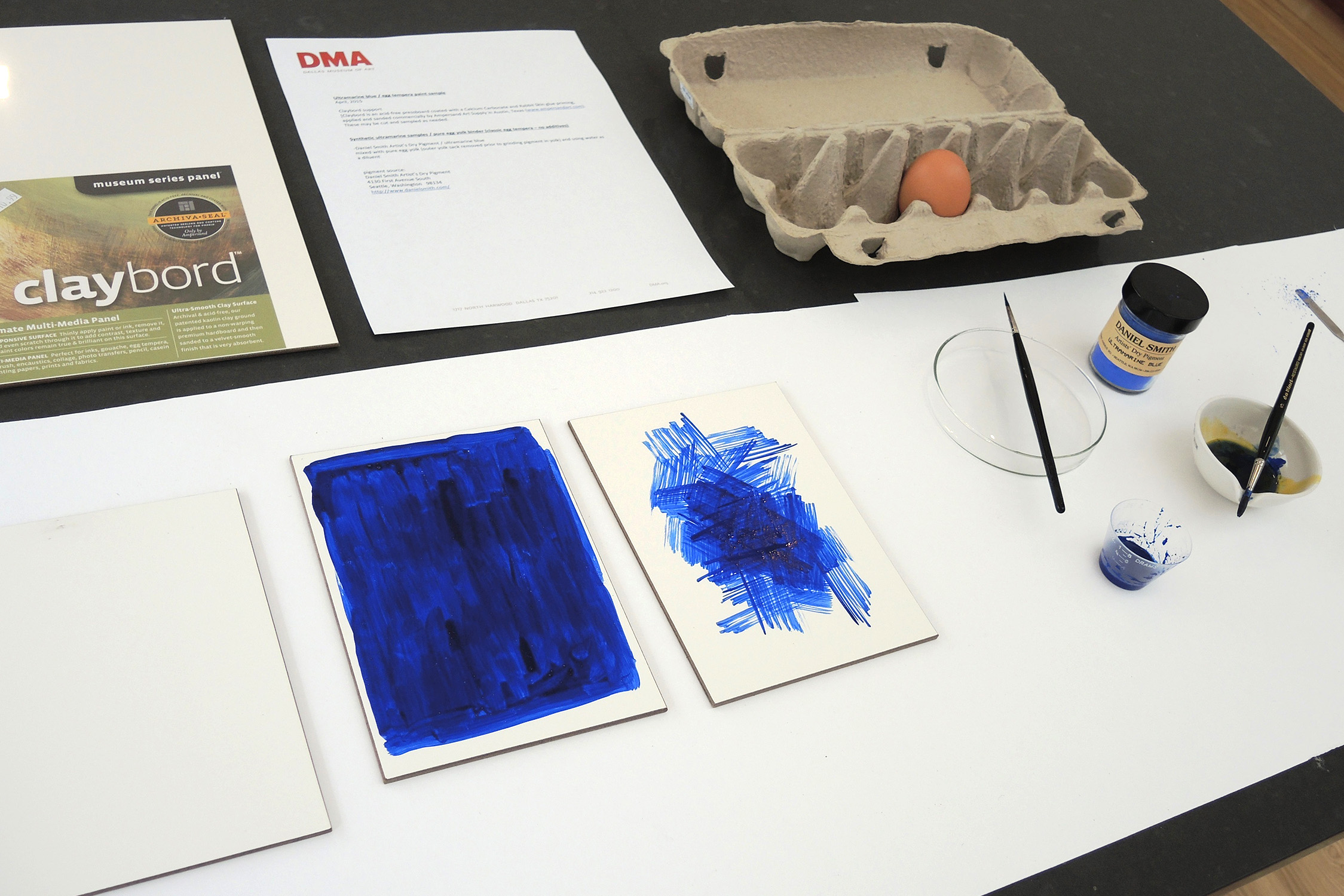Understanding Ultramarine Disease
 Pietro Paolini, Bacchic Concert, c. 1625-1630
Pietro Paolini, Bacchic Concert, c. 1625-1630
Dallas Museum of Art, The Karl and Esther Hoblitzelle Collection, gift of the Hoblitzelle Foundation
Image courtesy of Dallas Museum of Art
This project focused upon a well known but little understood problem found in areas of Old Master paintings containing ultramarine blue. Even in well-preserved pictures, areas of natural ultramarine (ground lapis lazuli) can turn gray and flat, resulting in formless areas of drapery, landscape, and sky. Often referred to as “ultramarine disease,” the phenomenon has never been adequately explained, and its cause—as well as any potential for treatment—remains a mystery.
The molecular structure of ultramarine blue falls within a specific category of materials known as zeolites, characterized by a cage–like outer structure that contains specific atoms–in the case of ultramarine, sulfur atoms.
 Courtesy of Dallas Museum of Art
Courtesy of Dallas Museum of Art
 Courtesy of Dallas Museum of Art
Courtesy of Dallas Museum of Art
Professor Ken Balkus, Professor of Chemistry in the School of Natural Sciences and Mathematics at UT Dallas, is one of the world’s leading experts on zeolites. He and his team of collaborators have taken an interest in exploring ultramarine disease with the goals of identifying its causes and determining whether or not the phenomenon can be reversed.
Mark Leonard, former Chief Conservator at the Dallas Museum of Art, assisted with the preliminary studies by preparing a number of natural and synthetic ultramarine blue paint samples, which underwent analysis and study by Dr. Balkus and his team. Building upon these initial investigations, it is hoped that recreation of damaged surfaces can be carried out through a variety of methods; these changes will then be studied and characterized.
Once a mechanism mimicking what is seen in actual paintings is identified, small samples of paintings from the DMA’s collection (and elsewhere) that are afflicted with ultramarine disease will be studied in micro-detail. With a full understanding of the phenomenon’s underlying mechanisms, opportunities for reversing its damaging visual effects can be developed.



